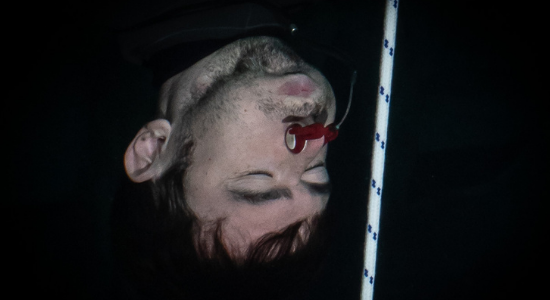Introduction
I always thought the glottis neutral/natural position was “open”. Like many freedivers, when I encountered leaking mouthfill issues, I assumed that one of the causes was that my glottis was not “strong” enough and had to train it specifically.
However, two years ago, I encountered something strange and counter-intuitive about my glottis. It seemed that on a dry exhale breath-hold, my glottis was remaining closed by itself (without me “keeping” it closed).
After several “tests” on myself, I realized that the glottis was also staying closed on full lung breath-hold. On the opposite, on Neutral lungs (FRC), the natural position of my glottis was “open”.
Let’s play
Before going further, let me detail precisely how you can test it on yourself.
- First, you need excellent glottis awareness. To develop it, you can “cough” very gently multiple times. Playing with the “door” will help you better understand it.
- Then, make a forced exhale (it doesn’t have to be RV, anything below FRC should work). Close your glottis, relax your abdominal muscles, relax your tongue and eliminate ALL the tensions. DO NOT TRY TO HOLD YOUR BREATH; just see what happens with your glottis when you do “nothing” and when you are entirely passive.
- You can do the same with FRC and on full lungs.
- Just to be a bit more precise about Full lung and empty lungs tests: I feel that if I do absolutely nothing, the glottis remains closed, and the breath “HOLD” requires zero energy. However, if I produce a tiny bit of energy to re-open it, the air starts to flow in/out, and the glottis stays open.
Experts opinions
To make sure that my “feeling” of the glottis remaining closed on empty/full lungs was not just me being crazy or having a weird body, I selected three freedivers to replicate the experiment :
Nathan Vinski: Nathan is a good friend, we shared many ideas about freediving, and he is the most knowledgeable person I know about the sport. When I asked him to experiment on himself, he didn’t confirm my hypothesis at the moment. However, a few days later (he kept playing with it independently), he agreed with my observations.
Claire Walsh: Claire is the female Irish national record in multiple depth discipline. I asked her to be a guinea pig for the experience because she also happens to be a professional singer. For sure, she would have a better glottis awareness than me! I had a bit of trouble accurately explaining the “experiment” (it was on video conference call during the first covid wave), but once we were on the same page, she also felt her glottis remained closed on exhale and full-lung. I asked her a percentage of confidence, and she was 100% confident.
Max Gardien: I did an equalization workshop with Max, and this guy is a machine in terms of equalization “raw” skills (dry exercises) and, of course, in the water. The same as Claire, I knew he would be a great help for his glottis awareness. After a few tries and observations on himself, he arrived at the same degree of confidence as Claire: The glottis was remaining closed by itself on full and empty lungs, and he was 100% sure of it.
Interpretation :
My interpretation of those observations is that the main factor is the pressure differences between the lungs and ambient (not necessarily the absolute lung volume).
I base this interpretation on another experimentation you can easily replicate :
Make a forced exhale below FRC (and less than RV to keep the exercise accessible). While you close your glottis, keep your abdominal muscles engaged (and stable) and try to release the tensions of your glottis: this time, the glottis reopens itself.
Having the abdominal muscle engage maintains the lung and ambient pressure balance. Under this condition, the “natural position of the glottis” is “Open.”
Application:
if we look at a “normal” dive using mouthfill, after the last recharge, we can divide the dive into two parts:
1. The parts where our diaphragm keeps rising smoothly and the lung pressure matches with the ambient pressure:
We must intentionally keep our glottis closed during this part as its natural position would be “Open.” BUT we only need to keep it closed very gently because the pressure difference between the mouth and lungs is not so large (if we are not overpressurizing the oral cavity).
2. The part of the dive beyond natural mobility of the diaphragm when lung pressure starts to be “late” (inferior) compared to ambient pressure :
During this part of the dive (which constitutes the last part of the descent), the natural position of the glottis becomes “Closed.” Despite an increased difference in pressure between the mouth and lungs, we do not need to generate tension in the glottis to keep the air in our mouth (unless we need a lot of pressure to open the eustachian tubes, a topic we will come back on in a later article).
I suggest that you focus on the second point: remember, the deeper you go, the less often you need to equalize. It means you can be completely PASSIVE. Trying to “strongly” hold the mouthfill will only generate unnecessary tensions and enhance the leak. You can leave your glottis in peace and let it do the job for you.
To go further
If you want to FEEL the application of this article in your dives, there is a straightforward exercise you can do. I have been using it on my students for the last two years, and there is a high chance it will drastically improve the comfort and efficiency of your mouthfill.
Check this article to find out :
Mouthfill : Make peace with your glottis

